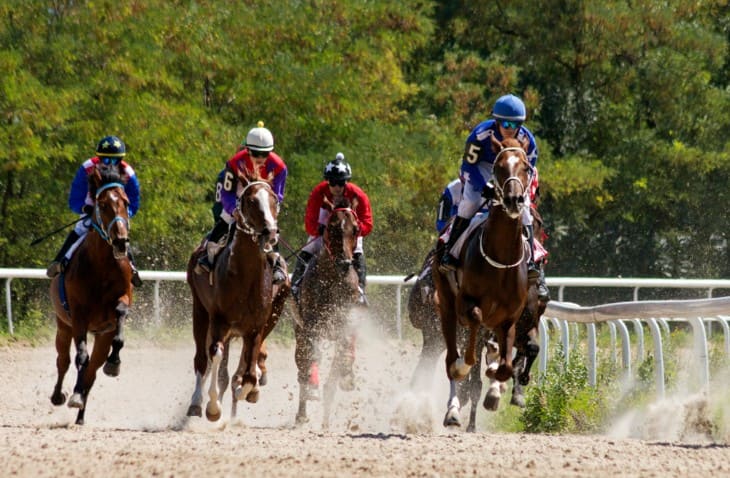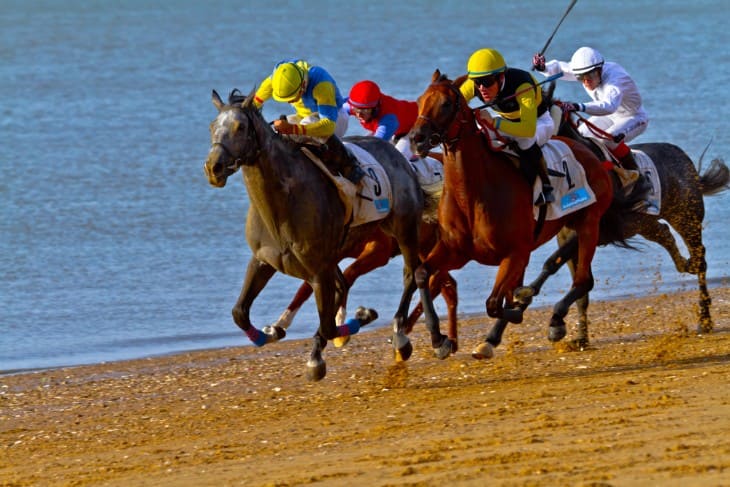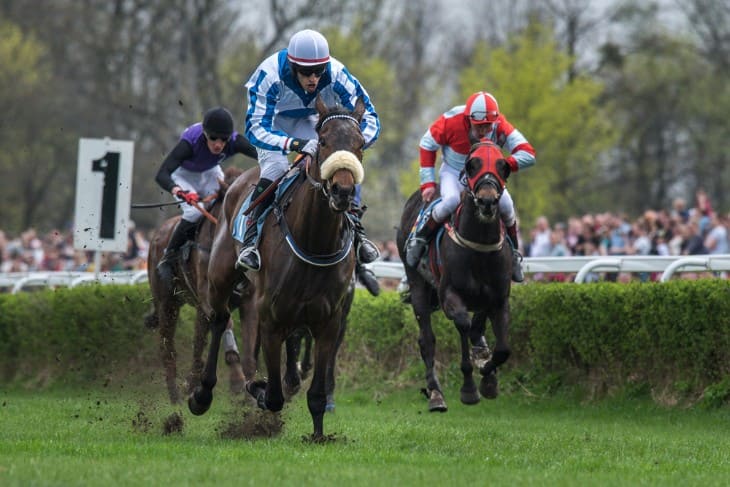- Analysing Race Dynamics: Key Factors to Consider
- Role of Weather and Track Conditions in Race Outcomes
- Understanding Horse Behaviour and Performance Signals
- The Impact of Jockeys' Strategies on Betting Decisions
- Real-Time Data Analysis: Tools and Techniques
- Money Management: Adjusting Bets Based on Race Developments
- Handling Stress and Decision Making
- Technology and Innovations
- Conclusion
Adaptive betting in horse racing refers to the strategy of altering bets based on the evolving dynamics of a race. This approach contrasts with static betting, where wagers are placed before a race starts and remain unchanged regardless of race developments. Adaptive betting requires a keen understanding of the race's nuances and the ability to interpret live data and events as they unfold. This method is gaining popularity among seasoned bettors who seek to capitalise on real-time insights.
The core of adaptive betting lies in its flexibility. Bettors must be prepared to adjust their strategies based on a multitude of factors, including the horses' performances during the race, changes in track conditions, and the strategies employed by jockeys. This type of betting is not just about predicting the winner but also involves making educated decisions on various betting markets as the race progresses. This requires a deep understanding of horse racing dynamics and a quick, analytical mind.
Analysing Race Dynamics: Key Factors to Consider
When analysing race dynamics, several key factors play a crucial role in making informed betting decisions. Understanding these elements can significantly enhance the effectiveness of adaptive betting strategies.
- Horse's Position and Pace: Monitoring a horse's position during the race is vital. Is the horse leading, in the middle of the pack, or trailing? The pace of the race also affects outcomes. A fast-paced race might favour horses that excel in endurance, while a slower pace can benefit sprinters.
- Jockey's Decisions: Jockeys play a crucial role in how a race unfolds. Their decisions, whether to hold back or push forward, can dramatically alter the race's outcome. Observing their tactics during the race can provide insights into how the race might conclude.
- Race Length and Type: Different horses perform differently depending on the race length and type. Sprint races might favour certain horses, while others might excel in longer, endurance-based races.
- In-Race Events: Unexpected events, like a horse losing its stride, sudden changes in weather, or accidents, can turn the race's tide. Adaptive bettors must quickly reassess the situation and adjust their bets accordingly.
Role of Weather and Track Conditions in Race Outcomes
Weather and track conditions play a pivotal role in horse racing and significantly influence Reacting to In-Race Events. Adaptive bettors must be acutely aware of these factors and ready to adjust their bets accordingly. Here are some key considerations:
- Track Surface Changes: Different weather conditions can alter the track surface, affecting how horses perform. A dry, firm track offers different challenges compared to a wet, muddy track. Horses known to perform well in certain conditions may struggle in others.
- Weather Shifts During the Race: Weather can change unexpectedly during a race. A sudden downpour or a change in wind direction can impact the race's outcome. Bettors must be prepared to adjust their strategies in response to these changes.
- Temperature and Humidity: Extreme temperatures and humidity levels can affect a horse's stamina and performance. Some horses perform better in cooler conditions, while others might have an edge in warmer climates.
- Visibility and Light Conditions: Fog, rain, or the time of day can affect visibility. Races held during dusk or dawn may present different challenges compared to those held in broad daylight.
Adaptive bettors must continuously monitor weather and track conditions, understanding their potential impact on the race. This aspect of betting requires not only an awareness of the current conditions but also the foresight to anticipate how these conditions might change during the event and affect the horses' performance.

Understanding Horse Behaviour and Performance Signals
Gaining insights into horse behaviour and performance signals is crucial for adaptive betting. Bettors must be adept at interpreting subtle cues from the horses before and during the race. These cues include a horse's body language, its responsiveness to the jockey, and its demeanour in the parade ring. For example, a horse that appears agitated or overly calm before the race might not perform as expected. Similarly, during the race, a horse’s ease in maintaining or changing pace can indicate its comfort level and stamina, crucial factors for Reacting to In-Race Events.
Another aspect involves understanding the individual histories and characteristics of each horse. Some horses may have a history of performing exceptionally well under certain conditions or distances, while others may be known for their unpredictability. This knowledge, combined with real-time observation, allows bettors to make more informed decisions on how a horse might perform throughout the race.
The Impact of Jockeys' Strategies on Betting Decisions
The role of the jockey is often underestimated in horse racing betting. However, a jockey’s strategy and decision-making skills can significantly influence the outcome of a race. A jockey's ability to read the race, know when to hold back or push a horse, and respond to the movements of other racers is pivotal. Experienced jockeys often have the knack for making split-second decisions that can change the course of the race, essential for effective Reacting to In-Race Events.
Adaptive bettors should pay close attention to the jockeys in a race, considering their track record, experience, and past performances under similar conditions. Understanding a jockey’s tendencies can provide insights into how they might handle the race's unfolding dynamics. For example, some jockeys are known for their aggressive starts, while others might excel in guiding their horses through tight situations. This understanding helps bettors anticipate potential race developments and adjust their betting strategies accordingly.
Real-Time Data Analysis: Tools and Techniques
In the world of horse racing betting, the use of real-time data analysis is becoming increasingly important. This approach involves using tools and techniques to analyse data that is generated during the race. The key lies in Reacting to In-Race Events swiftly and accurately. Here are some important tools and techniques used in real-time data analysis:
- Live Streaming and Slow-Motion Replays: Watching the race live or in slow-motion allows bettors to observe critical moments and subtleties that might influence their betting decisions.
- Mobile Betting Applications: These apps often provide real-time data on horses' positions, pace, and other race dynamics, enabling bettors to make informed decisions quickly.
- Data Analysis Software: Some software tools can analyse vast amounts of data, including live race data, to predict potential outcomes. These predictions can be used to adjust bets on the fly.
- Social Media and Forums: Real-time discussions and expert opinions on social media and betting forums can provide valuable insights and different perspectives on how the race is unfolding.
These tools enhance the bettor's ability to make swift, data-driven decisions, crucial for successful adaptive betting in horse races.
Money Management: Adjusting Bets Based on Race Developments
Effective money management is a fundamental aspect of adaptive betting. It involves adjusting your bets based on the developments within a race, which requires a disciplined approach and an understanding of risk management. Successful bettors know when to increase their stake based on favourable conditions and when to cut their losses if the race is not unfolding as expected. This flexibility is essential for Reacting to In-Race Events and ensuring long-term profitability.
The key to successful money management in adaptive betting is to have a clear plan and stick to it. This plan should include a set budget for each race and guidelines on how much to adjust bets depending on different scenarios. For instance, if a favoured horse is performing well, a bettor might decide to increase their stake. Conversely, if an unforeseen event like a sudden change in weather negatively impacts their chosen horse's chances, it might be wise to reduce the stake or shift it to another horse. This dynamic approach to betting allows for maximising returns while minimising risks.

Handling Stress and Decision Making
The psychology of betting is an often overlooked but critical aspect of adaptive betting in horse racing. The ability to remain calm and make rational decisions under pressure is essential, particularly when Reacting to In-Race Events. The fast-paced nature of horse racing can lead to stress, which in turn can impair judgement and lead to hasty or ill-considered bets. Bettors must be aware of the psychological challenges they face and develop strategies to maintain a clear head throughout the race.
One effective approach is to practice mindfulness and stress-reduction techniques. This can help bettors stay focused and prevent emotions from dictating their betting decisions. Additionally, setting clear rules for betting and sticking to them can help in maintaining discipline. This includes setting limits on bet sizes and avoiding the temptation to chase losses. By understanding and managing the psychological aspects of betting, bettors can improve their decision-making process and increase their chances of success.
Technology and Innovations
The integration of new technologies is expected to enhance the betting experience in several ways:
- Advanced Data Analytics: Emerging technologies in data analytics will provide deeper insights into races, enabling bettors to make more informed decisions. Predictive models using machine learning and AI could analyse vast datasets to forecast race outcomes with higher accuracy.
- Virtual and Augmented Reality: These technologies could offer immersive ways to view races, providing bettors with a more detailed perspective of the race dynamics. Bettors could, for instance, virtually experience the race from the jockey’s point of view.
- Blockchain and Cryptocurrency: The integration of blockchain technology and the use of cryptocurrencies could streamline betting transactions, making them more secure and transparent.
- Wearable Technology for Horses: Innovations in wearable tech for horses could provide real-time data on their health and performance levels, offering bettors crucial information for their betting decisions.
As these technologies develop, they will provide bettors with more tools and information for effective adaptive betting, enhancing their ability to respond quickly and accurately to changes within the race.
Conclusion
In conclusion, the practice of adaptive betting in horse racing is both an art and a science. It requires a fine balance between understanding historical trends, interpreting real-time data, and Reacting to In-Race Events. The ability to adapt quickly to the dynamic nature of horse racing is what sets successful bettors apart.
For more information:








